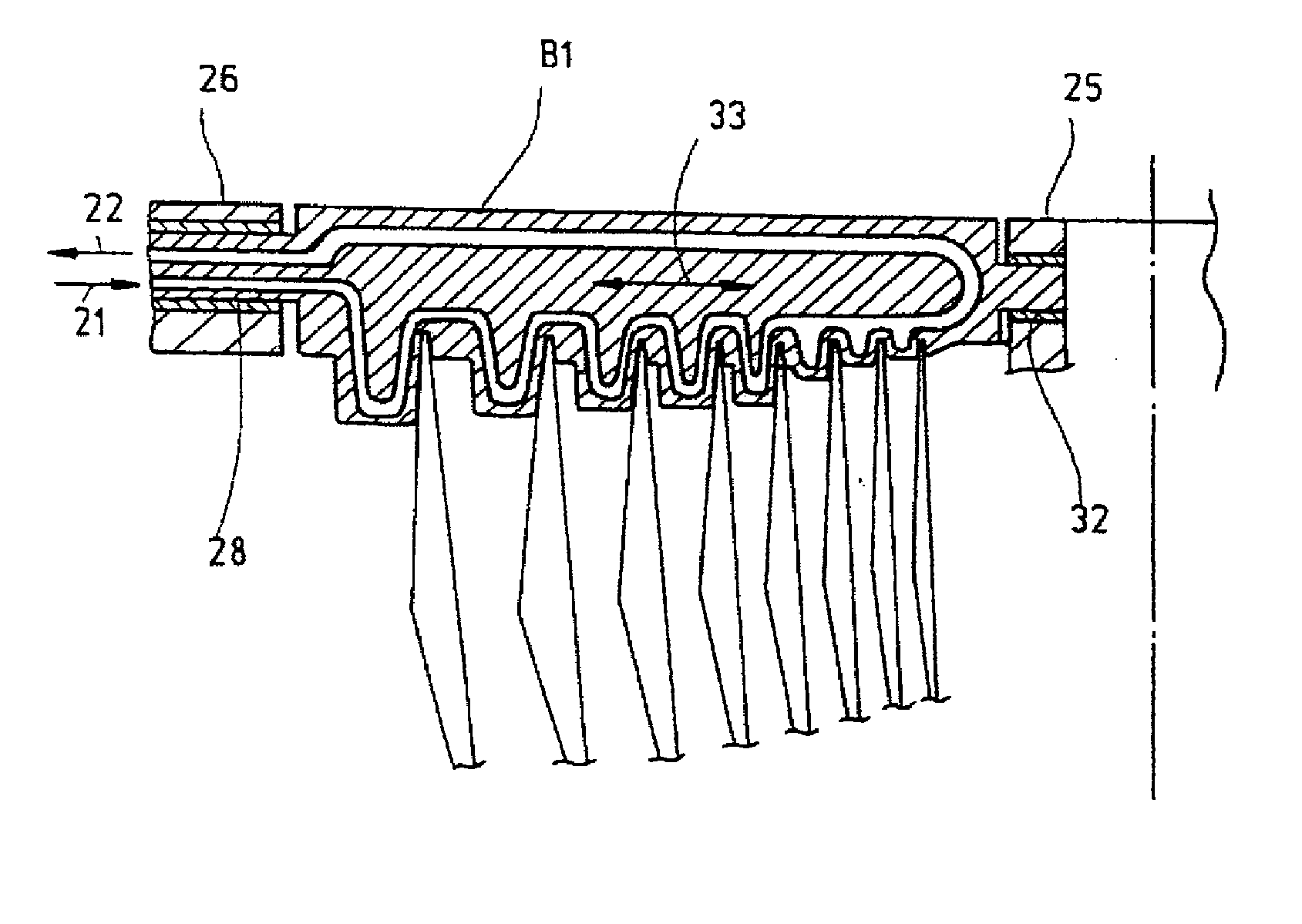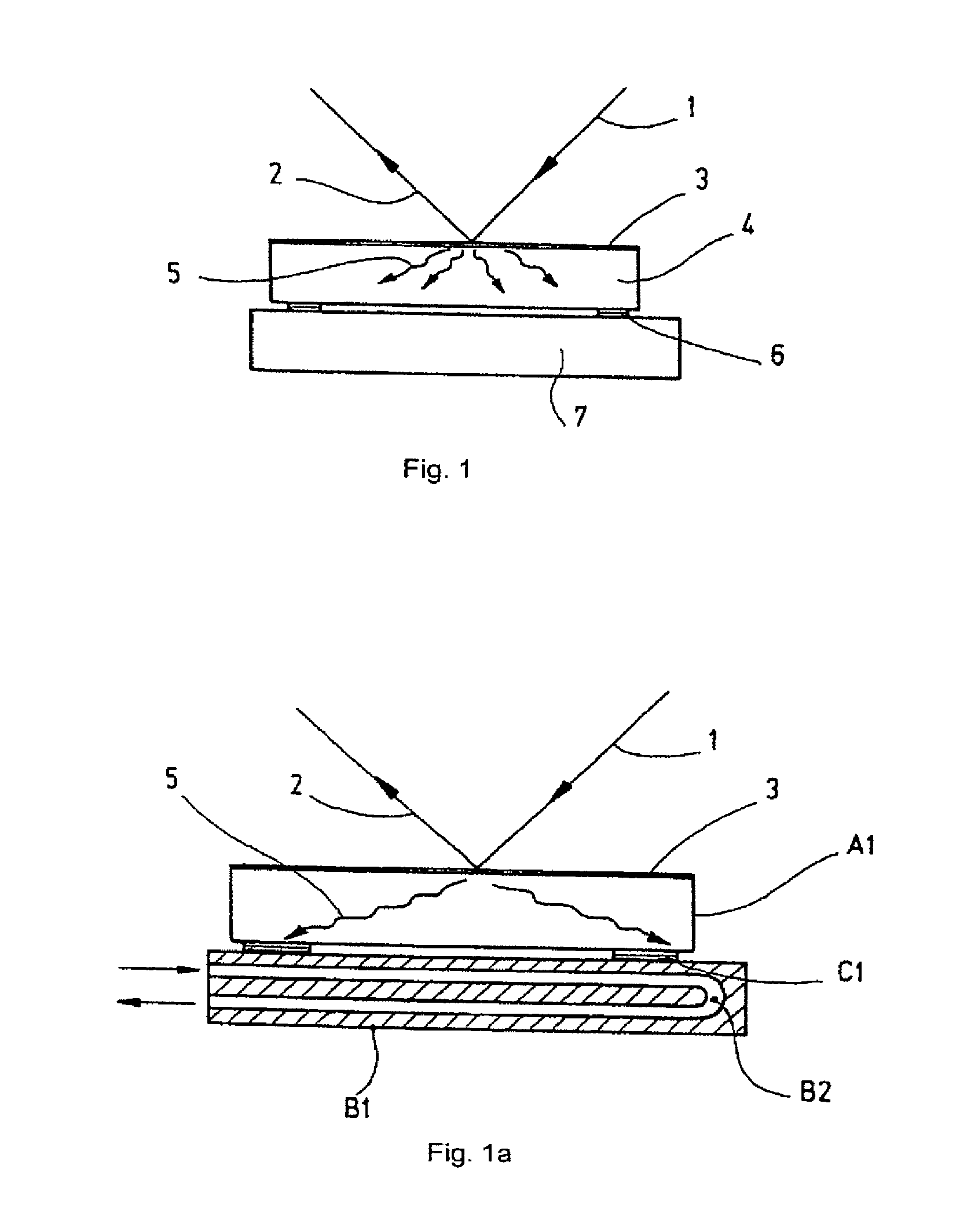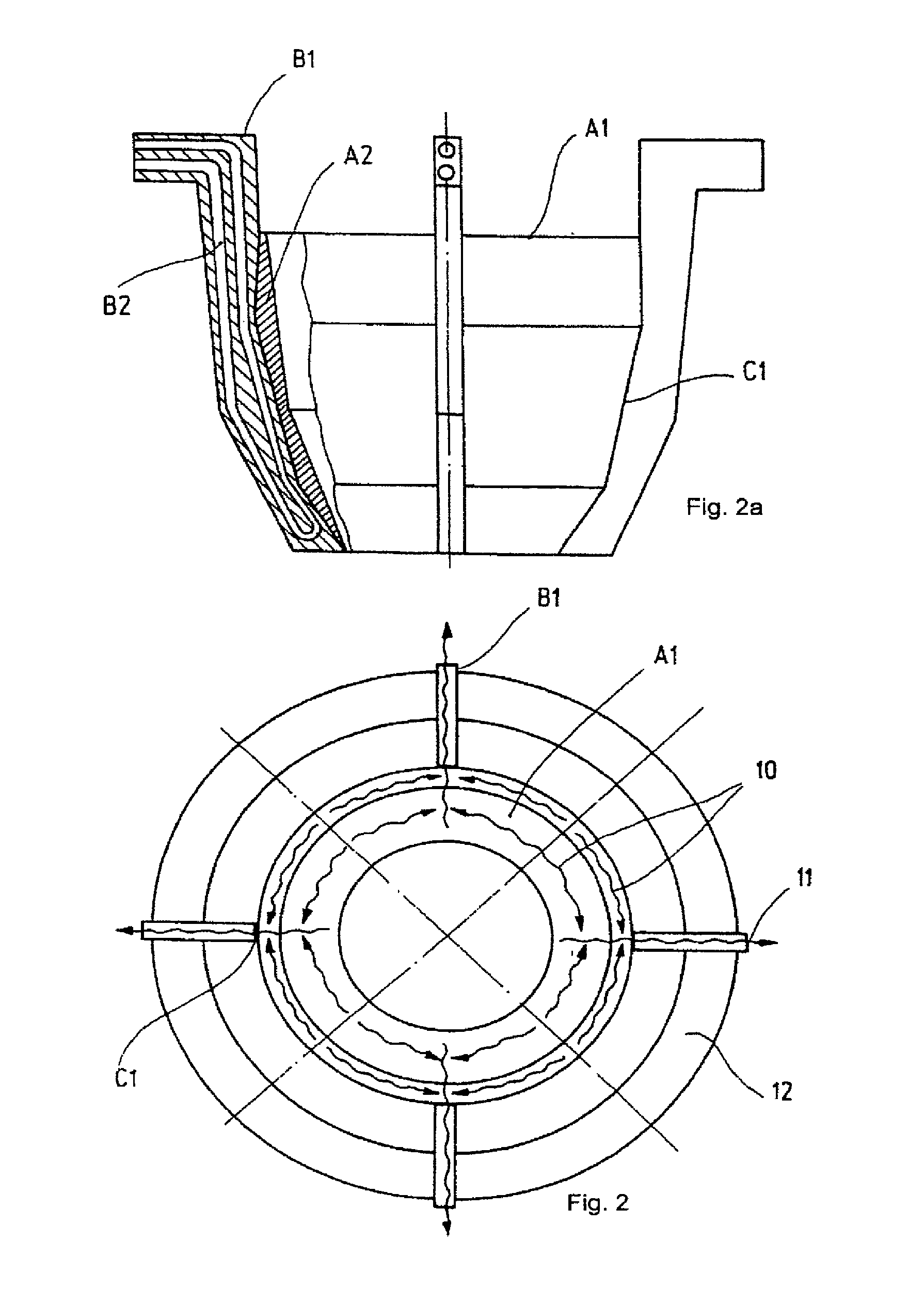Optical Component Having an Improved Transient Thermal Behavior and Method for Improving the Transient Thermal Behavior of an Optical Component
a technology of optical components and thermal behavior, applied in the direction of instruments, lighting and heating apparatus, photomechanical apparatus, etc., can solve the problems of poor heat conduction ability, poor heat carrying off, and high temperature, and achieve the effect of avoiding or at least reducing deteriorations and being less expensiv
- Summary
- Abstract
- Description
- Claims
- Application Information
AI Technical Summary
Benefits of technology
Problems solved by technology
Method used
Image
Examples
Embodiment Construction
[0070]FIG. 1a generally shows an optical component which is comparable with the optical component shown in FIG. 1. Reference numerals used in FIG. 1a which are identical with those reference numerals in FIG. 1 denote same features as in FIG. 1, and they are not described here again.
[0071]FIG. 1a generally shows the heat conduction from an optical element A1 of the optical component into the holder or holding element B1 according to the present invention. The optical element of the optical component comprises a substrate A1 made of a highly heat-conductive material (for example copper, aluminum, SiC) and having a large cross-section. The holder B1 comprises one or several cooling channels B2 which is or which are flown through by a cooling medium. The optical element A1 is connected to the holding element B1 by means of a highly heat-conductive connecting element or connecting means C1 which has one or several of the following characteristics: a large contact area for contacting the ...
PUM
 Login to View More
Login to View More Abstract
Description
Claims
Application Information
 Login to View More
Login to View More - R&D
- Intellectual Property
- Life Sciences
- Materials
- Tech Scout
- Unparalleled Data Quality
- Higher Quality Content
- 60% Fewer Hallucinations
Browse by: Latest US Patents, China's latest patents, Technical Efficacy Thesaurus, Application Domain, Technology Topic, Popular Technical Reports.
© 2025 PatSnap. All rights reserved.Legal|Privacy policy|Modern Slavery Act Transparency Statement|Sitemap|About US| Contact US: help@patsnap.com



